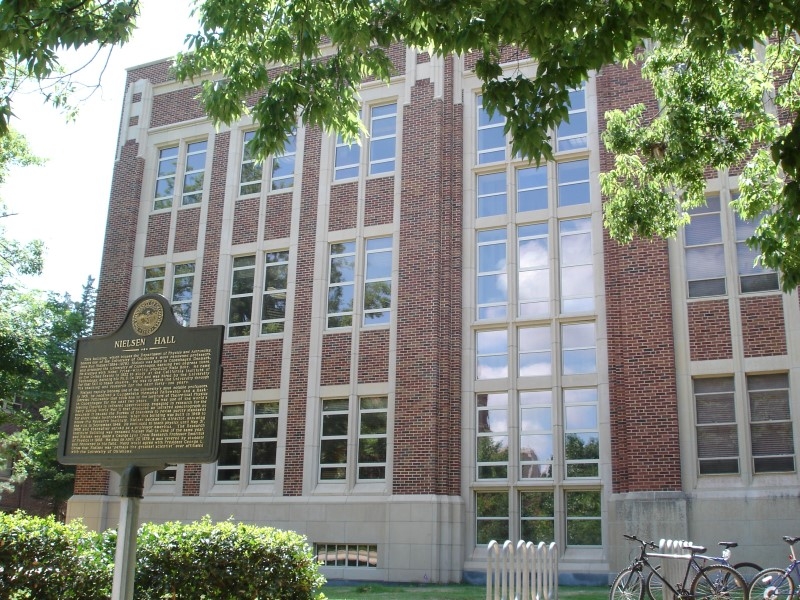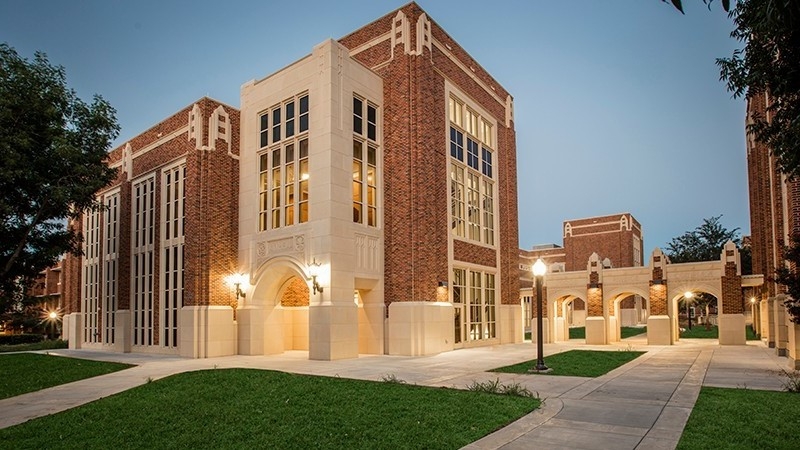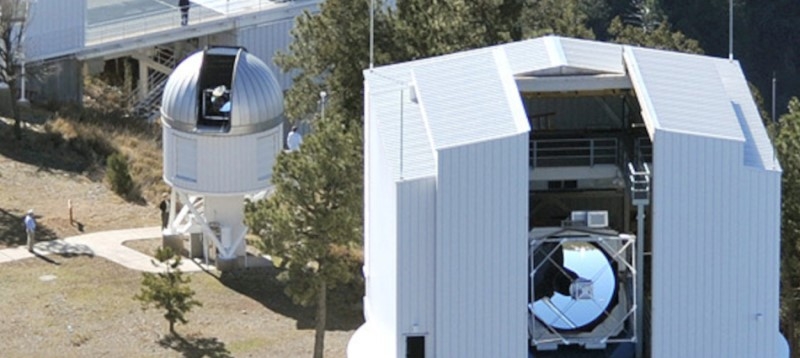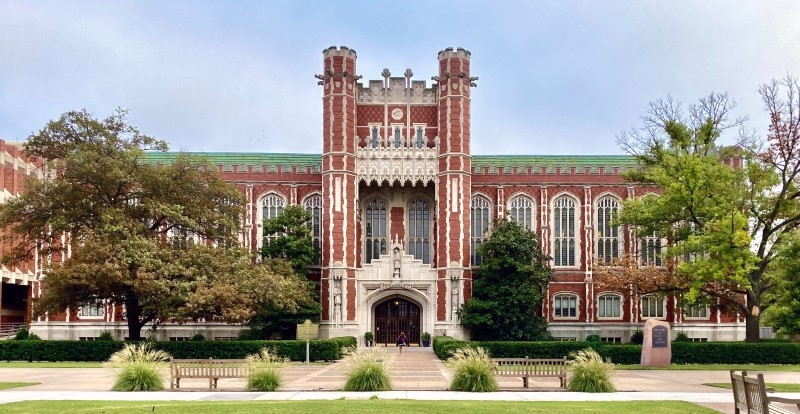Nielsen Hall houses the Homer L. Dodge Department of Physics and Astronomy on the Norman campus of The University of Oklahoma. Nielsen Hall was built in 1946 and was named after Jens Rud Nielsen (1894-1979) at his retirement in 1965.

Lin Hall, our new state-of-the-art building, hosts 18,000 square feet of laboratory space that meets NIST-A specifications and provides world-class research space for AMO and CM physics, including 12 laboratories. It is one of only a few buildings in the world to meet the NIST-A requirements on vibrations, temperature and humidity, as well as electromagnetic interference.

Lin Hall has been named in recognition of Chun C. Lin, a professor in the OU Homer L. Dodge Department of Physics and Astronomy from 1955 to 1968. The new construction was funded by Lin and the Avenir Foundation.
The instrument shop at the Homer L. Dodge Department of Physics and Astronomy has supported the experimental research needs of the department for a century. This facility has designed, built and collaborated on a wide variety of apparatus including, but not limited to: High Energy Physics work on DØ, Higgs Boson, and Monopole detector systems; Atomic Molecular scattering systems — Electron-Photon Coincidence, Electric Dipole Moment, Cold Atom systems; UHV chambers and associated hardware; Thin film sputtering systems; High Pressure (100,000 PSI) systems, Electro-mechanical drive and control; Furnace construction and PID control; Telescope repair.
This facility also supports the physical research needs of other University departments including the Health Science Center and has done independent work for the U. S. Air Force, Jet Propulsion Laboratory, and Brookhaven National Lab.
Every Wednesday night while OU is in session, the Physics and Astronomy department sponsors free public star parties on the roof of Lin Hall. A typical night could include a planet or two, binary stars, star clusters, or maybe one of the brighter nebulae. All ages are welcome, but we ask that younger children be under adult supervision at all times.
The University of Oklahoma is a member of the Astrophysical Research Consortium, providing undergraduates, graduates, postdocs, and faculty in the department with access to the 0.5m and 3.5m telescopes at Apache Point Observatory in Sunspot, New Mexico. OU has a 10% share of the 3.5m telescope. Both the 0.5m and 3.5m can be remotely operated from our offices in Nielsen Hall, and a full description of the instrumentation available on each telescope is available here at our full telescope description page.

OU Library: The Bizzell Memorial Library (pictured below) is located just north of Nielsen Hall.
Engineering Library: A branch library of interest to members of our department.
History of Science Collection: The main library houses an internationally known collection of scientific manuscripts, including works from Isaac Newton and Galileo Galilei.

The computing resources in our building include a 32-node Apple cluster, and a set of 140 cores running Grid software for the High Energy Physics group. The facilities also include a PC lab for the College of Arts and Sciences, a graduate student lab of Linux workstations, as well as faculty workstations. The latter two groups together provide 163 cores for our departmental Condor pool, which has a peak throughput of 300 GFLOPS.
Large scale computations are performed on the Oklahoma Supercomputing Center for Education and Research (OSCER). OSCER has been developed cooperatively by over 750 researchers (faculty, staff, graduate students, undergraduates), in 26 academic departments within six colleges at OU’s 3 campuses (Norman, Health Sciences Center, Tulsa), with oversight by OU’s Chief Information Officer.
OSCER recently completed deployment of a Dell cluster supercomputer, Boomer, consisting of 435 compute nodes, a mix of PowerEdge R620 and PowerEdge R720, 352 of which are centrally owned (funded via OU IT internal budget) and 83 of which are “condominium” nodes that have been purchased by research teams at OU’s Norman and Health Sciences Center campuses. The aggregate peak speed is 111.6 TFLOPs (trillions of floating point operations per second), with 6992 cores, 15,680 GB of RAM and approximately 360 TB of globally accessible disk
ASAS-SN currently consists of 20 14cm telescopes, distributed around the globe at premier astronomical observatories. These telescopes allow surveying the entire visible sky every night, making the ASAS-SN network much less sensitive to weather conditions. ASAS-SN network is able to study variable objects or transients brighter than 18th magnitude in g-band, including supernovae, active galactic nuclei, variable stars, and others.
For more information, see: http://www.astronomy.ohio-state.edu/~assassin/index.shtml